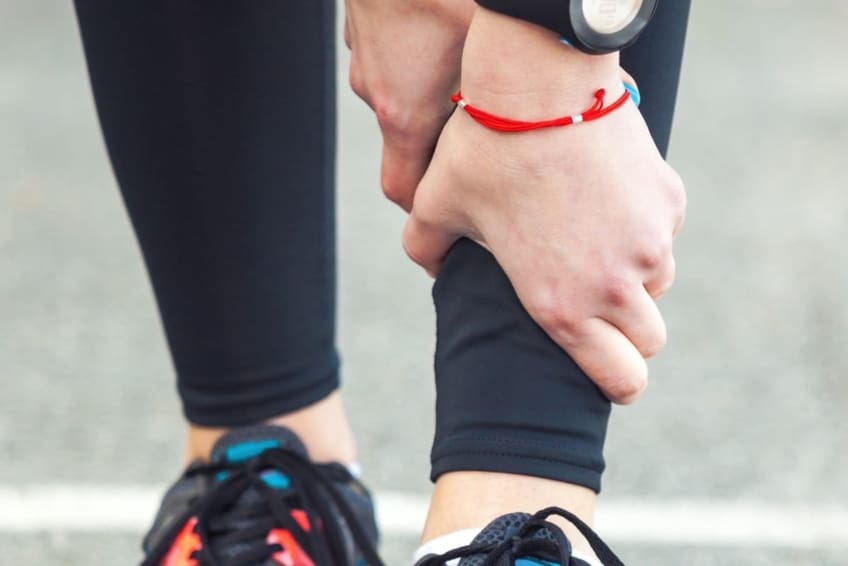
What are shin splints?
Shin splints describe a type of pain in your shinbone (tibia). The pain is often caused by overuse (running and jumping). Shin splints usually heal within a few weeks, with rest and proper treatment.
Symptoms
You can get shin splints in one or both of your legs. Most people who have shin splints feel pain on the inside edge of their shinbones. Pain may be acute (sharp) or a dull ache. Your shins may hurt when you’re active. They can also hurt when you are inactive shortly after completing activity. The pain may be worse with pressure or exercise. It may improve with rest and at-home treatment.
Causes
Shin splints occur from repeated and often high-impact motion. They cause inflammation where your muscles and tendons connect to your shinbone.
Some people have an increased risk of getting shin splints. This includes people who:
- Play sports (such as running, dancing, and gymnastics)
- Exercise on hard surfaces
- Wear ill-fitting or worn-out shoes
- Have flat feet
- Pronate (roll their feet in) when they walk or run
- Increase training times, levels, or distances too fast
- Are new to a high-impact sport
Diagnosis
If you have pain that doesn’t improve with rest or your shin area is swollen, red, or hot to the touch, you should call your doctor.
Your doctor will review your symptoms, activity, and health history. They may order tests, including an X-ray or MRI (magnetic resonance imaging). This can rule out other issues, such as a stress fracture. This is a small crack along the bone.
Can shin splints be prevented or avoided?
Athletes who are at risk of shin splints can take some precautions. Runners should choose shoes that fit well and absorb shock. Shoes start to lose shock resistance after about 250 miles of use. Try running on softer surfaces, such as a track or treadmill. Do not increase training too fast if you are new or getting back into running. Dancers and gymnasts can exercise on sprung floors, if available. Cross training with low-impact activities also can help. Examples of these include swimming and using an elliptical machine.
Treatment
Treatment for shin splints depends on the degree of your injury and your health. You can try at-home treatments, such as the following:
- Decrease activity or rest. Identify what motions affect your shins most and limit or stop these. If your pain doesn’t improve, switch to low impact exercises or rest from all activity.
- Ice your shins. You can ice your lower leg a few times a day. Use ice packs, ice massage, or an ice bath. This can help reduce swelling and ease pain.
- Pain medicine. You can take a nonsteroidal anti-inflammatory drug (NSAID) or acetaminophen to relieve pain and swelling.
- Stretching. This is important to prevent and treat injuries. With shin splints, you should stretch your calves, Achilles tendons, and ankles well. Continue these stretches even after you are well.
- Massage. This also can help in releasing and relaxing your muscles. Try massaging your calves, Achilles tendons, and other muscles surrounding your shins.
- Kinesiology tape (KT tape). This is a type of flexible athletic tape. There are specific applications depending on your injury. KT tape may help relieve pain from shin splints and provide support.
Your doctor may recommend getting physical therapy. This can help with pain, but also strengthen your leg muscles. Athletes can try using orthotic shoe inserts or arch supports. These help realign your feet and absorb shock. Ask your doctor for suggestions.
Living with shin splints
Begin treatment right away if you have symptoms of shin splints. This can help reduce long-term damage. It can take several weeks or months for shin splints to heal. Once the pain is gone, you can gradually return to your normal routine. Start slow to prevent reinjuring yourself. Talk to your doctor if you have chronic (ongoing) shin splints.
Questions to ask your doctor
- How do I know if I have shin splints or another lower leg injury?
- What should I do if I have chronic shin splints?
- Can I exercise while I have shin splints?
Resources
American Academy of Orthopaedic Surgeons: Shin Splints
National Institutes of Health, MedlinePlus: Shin Splints—Self Care
![]()
Copyright © American Academy of Family Physicians
This information provides a general overview and may not apply to everyone. Talk to your family doctor to find out if this information applies to you and to get more information on this subject.






